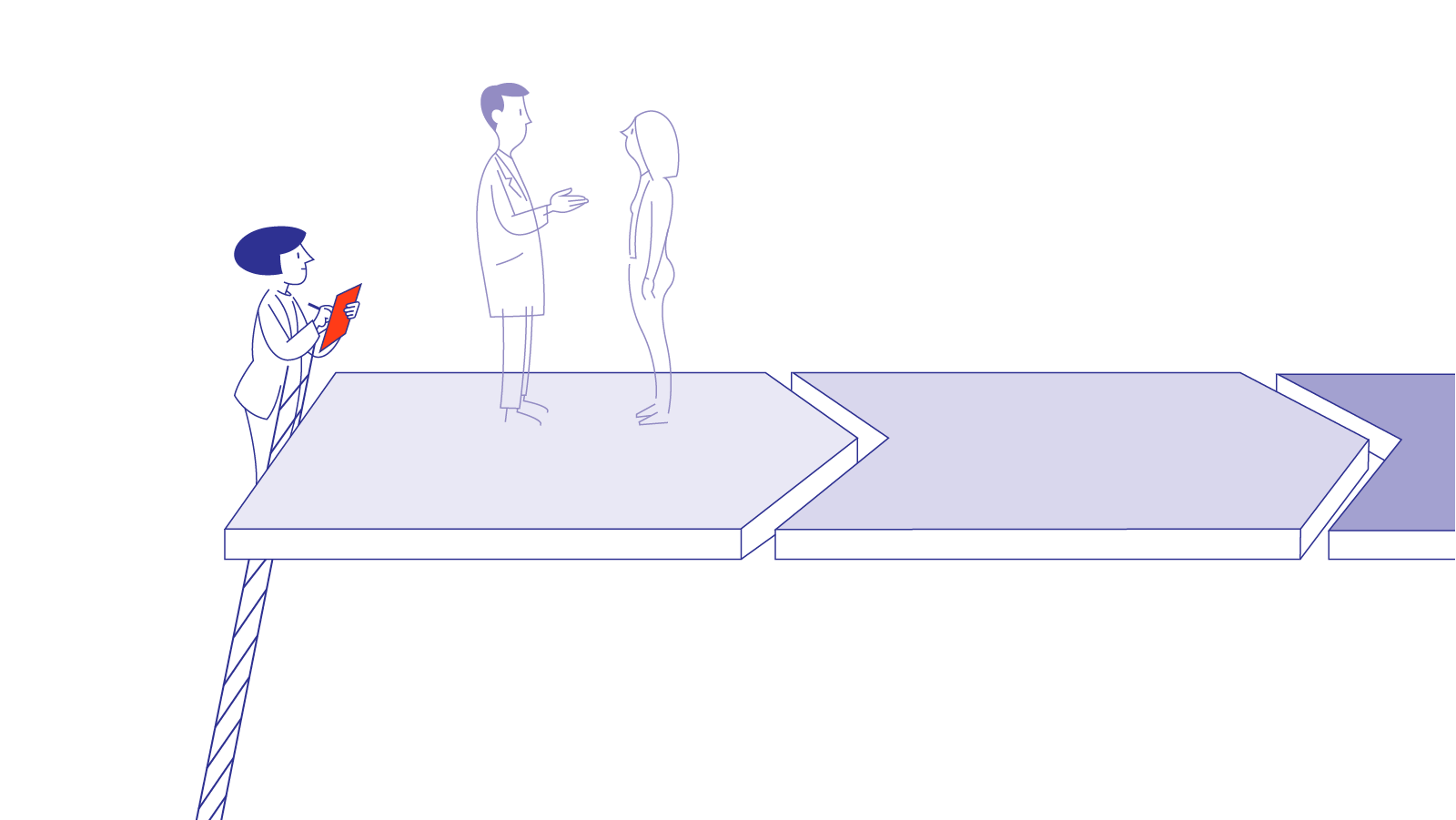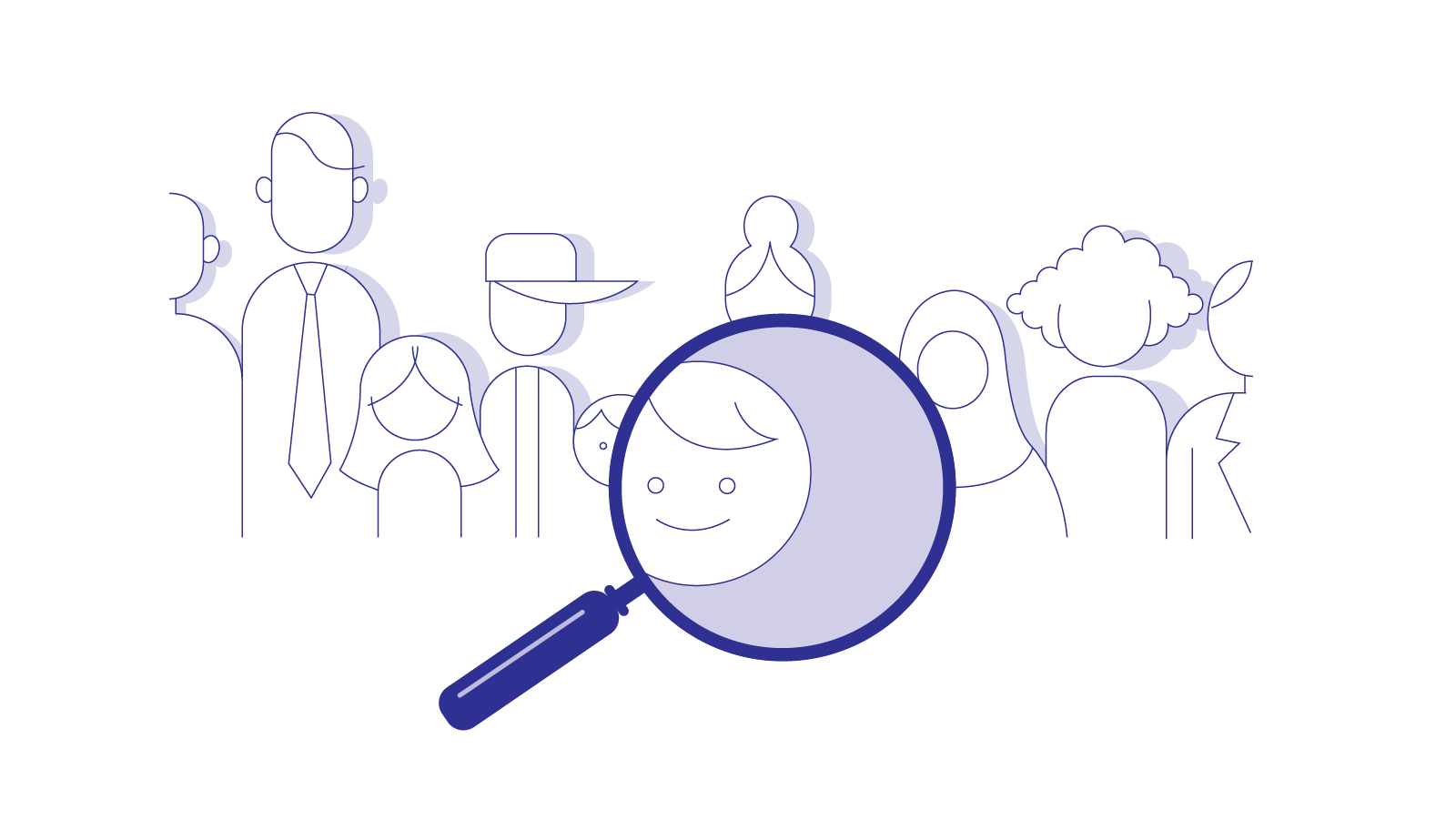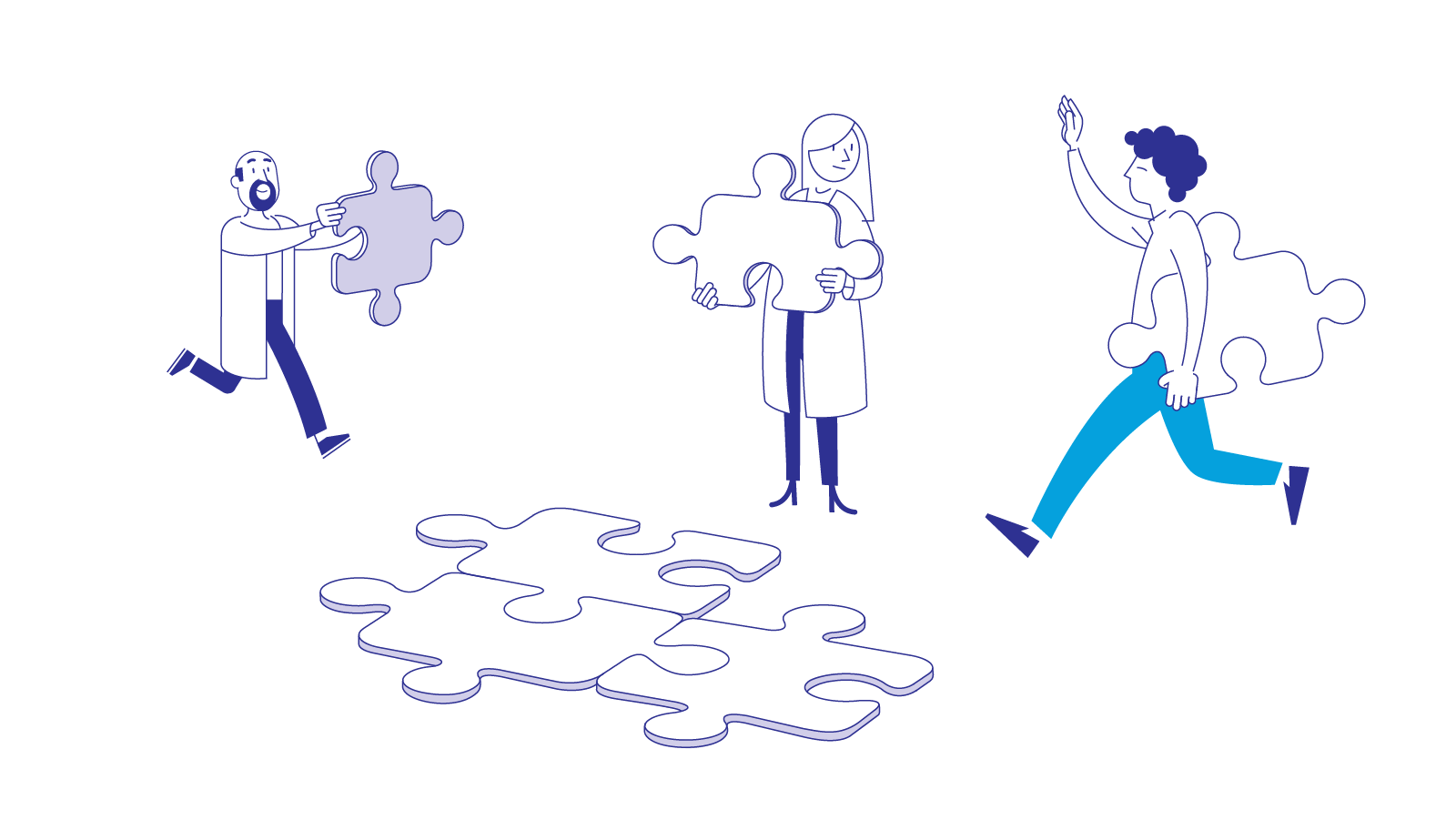
Figure 1. Novo Nordisk Device Research & Development implemented 5 types of UX research improvements over a 58-month period.
In our UX research team at Novo Nordisk Device Research and Development (DRD), we analyzed the UX research practice improvements we implemented during a 58-month period to understand what influence these changes made on the quality and impact of UX research within our innovation activities. Through analysis, we discovered each independent improvement effort could be categorized into one of five improvement themes.
Process: A Review of 5 Years of Research for Operations Improvements
For this article, a UX research practice improvement program refers to a dedicated program executed by one or more team members intended to improve the quality or impact of our UX research practice. These improvements were often the creation, standardization, or evolution of UX methods, processes, or deliverables.
“Process improvement is critical for our department, team members, stakeholders, and ultimately – our end users. Our approach to this is reflective and actionable, and takes into account feedback from all relevant parties,” explains Mark Guarraia, Head of User Experience, Design, and Prototyping in DRD.
For this retrospective, we analyzed the output of 15 such programs that occurred between November 2014 to September 2019. We summarized the problems and opportunities that triggered these improvements, and we analyzed themes in the specific goals behind each program. Finally, we interviewed key stakeholders impacted by these improvement programs to learn how (if at all) these programs had created a lasting impact within the innovation processes at Novo Nordisk A/S.
In short, we learned that our programs typically created meaningful, measurable improvements in our innovation practice, and this retrospective reminded us how the most successful projects resulted in either new work habits, more effective collaborations, or both.
Mia Bielecki, Corporate Vice President in DRD, advocates for the institutionalization of UX research in healthcare R&D: “Our work is in the service of the people who rely on our products, and we are continuously improving our ability to generate and translate user insights into great product concepts. Our UX research practice is an integral part of how we do device innovation. And having the best UX research practices is important in order to raise our innovation level and the impact of our products.”
Analysis: How Were these Improvement Programs Connected?
During our analysis of each improvement program, we relied on stakeholder interviews and project artifacts to clarify what effect each improvement program had on the research and innovation practice at DRD. For each program, we explored the following:
- What were the original opportunities or problem spaces that initiated the interest in a process improvement?
- What were the original goals of the program?
- Which stakeholders were involved in the program, and how were they effected?
- How did those stakeholders respond to the impact the project had on the R&D process at Novo Nordisk?
- Were the impacts of the improvement program sustainable?
Table 1 provides the list of improvement programs organized chronologically based on when the first version of the program was launched.
Table 1. Improvement programs and their opportunities and goals.
| Program | Problem/Opportunity | Goal | |
| 1 | Living UX Research Toolkit | UX research can (and should) improve as research questions become more complex and new tools become available for use. | Create and maintain a library of UX research tools where researchers and collaborators can add new approaches and remove obsolete ones. |
| 2 | Process Visualizations | Regulatory processes and standard operating procedures are long, detailed, text-based documents that can be time consuming for the reader. | Translate complex, text-heavy process documents into an easier to understand format. |
| 3 | Photographic Essays | Text-based insight reports can be long and difficult to consume. Interactive, multi-media formats of communication elicit more thought-provoking conversations with development teams. | Create more interactive formats for communicating insights in various communication styles that are more compelling and easier to understand than text-based reports. |
| 4 | Design Principles | Product and service design projects can avoid unnecessary challenges by considering fundamental principles of design. | Utilize fundamental design principles to kick-off projects and contextualize design recommendations through the development cycle. |
| 5 | Presentation Design Language | Presenting insights to diverse audiences requires a clear, compelling communication style that is equally approachable for managers, scientists, collaborators, and business partners. | Establish and evolve a reader-friendly framework for sharing insights to ensure they are communicated in way that is scientific, traceable, and easy to understand. |
| 6 | Mixing Research Methodologies | Some UX questions cannot be answered by using a single method or process. Relying on single methods due to historical experience with those methods may create inconclusive or non-actionable results. | Enable fellow researchers to know how and when to mix methods to answer increasingly more complex user experience research questions. |
| 7 | Competitive & Analogous Experience Analysis | Awareness of competitor and analogous user experiences can stimulate new ideas and more informed strategies. | Start and maintain a habit of studying the successes, failures, and opportunities inspired by the UX of competitors and analogous products and services. |
| 8 | Cross-portfolio Insight Synthesis | Researchers across the organization regularly generate knowledge for various projects. Sharing these insights enables teams to benefit from each other’s findings. | Introduce a streamlined process for synthesizing insights from various research programs to create foundational knowledge that frames assumptions for new projects. |
| 9 | Behavioral Archetypes | Understanding audiences within a population enables teams to make more informed development decisions. | Identify archetypes that represent behavioral tendencies within the target population. |
| 10 | Expert Reviews | Some questions posed by design and development teams can be answered expediently without conducting formal research programs. | Operationalize a streamlined practice for UX researchers to translate historical data and theory into UX suggestions. |
| 11 | User-centered Process Coaching | Colleagues across the organization verbalized an interest in taking a user-centered approach to their work. Many of these colleagues lacked formal training or historical experience in these UX research methods. | Establish a training practice for enabling colleagues from across the organization to learn methods of adopting user-centrism into their practice. |
| 12 | Translational Workshops | The findings from UX research are less valuable when they cannot be translated into viable, strategic next steps. Moreover, “viability” and “strategy” is dependent upon the context and conditions of various stakeholders. | Establish and maintain a practice of co-creating next steps from user research insights. |
| 13 | Competency Development Meetings | UX research is a practice that requires professionals to regularly learn new skills and techniques. | Start and maintain a habit of sharing new successes, failures, and methods in a safe group setting. |
| 14 | Generative Contextual Inquiries | Early integration of user research insights can inform better development decisions and reduce development risks. | Educate colleagues and collaborators about opportunities for integrative generative research early in the development cycle. |
| 15 | Common, Unifying Terminology | The working language of UX evolves quickly. Peers in an organization and an industry can have drastically different interpretations of words, and such misunderstandings can cause confusion. | Create and maintain a consistent, easy-to-access reference for communicating the meaning of relevant vocabulary terms. |
Note: Programs are highlighted and explained in this article with a reference number to each program from this table.
Results: Five Themes in UX Operations Improvements
Each improvement program was unique; specifically, each was the result of a specific context and set of circumstances that prioritized that program and made it relevant. However, an analysis of these programs revealed five themes that illustrated how these improvement programs were more connected than we had originally thought.

Figure 2. DRD simplified complex information through visual communication.
Theme 1: We Made Complex Information Easier to Understand through Visual Communication.
Many of our process improvements were focused on simplifying the way we internally communicated. Starting in 2015, we began translating our standard operating procedures (SOPs) and detailed research guidelines into process visualizations (#2) that we have updated over the years to be less complicated and easy to understand for our collaborators. These visualizations resembled user journeys, and the visual style helped internal stakeholders understand the complex regulations and detailed procedures of pharmaceutical user research.
We also took steps to unify the way we shared our insights with colleagues by creating a presentation design language (#5). The goal of this systematic approach to layout, typography, and information design was to make the viewing experience as easy as possible while still communicating in a scientifically traceable fashion.
Starting in 2016, we began to diversify the way we shared insights by introducing new formats such as photographic essays (#3). These media-rich deliverables enabled our engineering, design, and management colleagues to immerse themselves in the findings through photographs and illustrations instead of lengthy text documents. The format was especially useful for introducing the behavioral and cultural nuances that could challenge the biases held by various team members.

Figure 3. DRD integrated user research into earlier stages of product development.
Theme 2: We Increasingly Started Our Research Earlier in the Innovation Process.
User research is included at various stages within the medical product development timeline. Over the five-year period, we were consistently integrating user research earlier in the product definition stage. For example, we introduced new ways of performing generative contextual inquiries (#14) that could co-exist with the engineering processes that influence medical product design. The result of this earlier integration was that projects were informed by foundational user insights that could influence the fundamental direction of new therapies.
Additionally, we were progressively diversifying the way we were involved in early stage user research. We were more frequently performing competitive and analogous experience analysis (#7) to learn what users were expecting so that we could exceed their expectations.
“Living with chronic diseases should be about ‘living,’ first and foremost. As such, it is critically important that we understand the context within which our users live, and that we are smart about leveraging analogous experiences and assumed product interactions to create the most seamless experiences for our users,” says Guarraia.

Figure 4. DRD improved the methods and language of the user research sciences.
Theme 3: We Sharpened Our Scientific Methods and Language.
Over the course of five years, we created new research processes that called for mixing research methodologies (#6) more than ever before. We used qualitative and quantitative methods in parallel to understand complex human behavior. When a research method could not achieve our goals, we pioneered new research tools, scrutinized them as a team, and shared them when they were mature enough to be used in the field. The result was a living UX research toolkit (#1) that continues to grow.
“Using different methods mirrors how engineers approach technical problems, so it is fitting that we work with social scientists who use mixed methods to answer complex questions. If engineering helps us understand how to solve complex problems, then user experience insights help us understand which complex problems to solve. By considering many types of user insights, business opportunities, and technological approaches, we are letting a mix of relevant inputs and stakeholders influence our decisions.” says Peter Herskind, PhD, Senior Project Manager of the Alternative Technologies team.
These efforts enabled researchers, designers, and developers to more efficiently blend methods of natural and social sciences to study complex, global health behaviors. These efficiencies enabled development teams to more quickly and accurately learn about user populations when designing new medical therapies. As we combined schools of thought, we were compelled to grow a common, unifying terminology (#15) for setting clear expectations across an organization filled with different professions. Utilizing a language that was clear and approachable for scientists, business managers, and designers enabled our teams to align faster and avoid time-consuming communication errors.

Figure 5. DRD used UX hypotheses to explore new ideas and challenge assumptions.
Theme 4: We Continuously Created, Validated, and Disproved UX Hypotheses.
Each year, our team generates hundreds of new data points that range from project-specific details to general insights about humans managing chronic illness. Starting in 2017, we began a practice of translating these rich data sets into unified behavioral archetypes (#9) that could inform our design decisions. The archetypes are designed to evolve as new insights become available, and they function to inform our hypotheses about the needs and relevant desires of different people. We also synthesized industry best practices and published secondary as well as in-house primary research to create a growing catalogue of design principles (#4) that could inform fundamental design decisions for early-stage projects.
These efforts to use historical data to inform new ideas were welcomed in a scientific organization such as ours: creating hypotheses is the foundation of the scientific method and utilizing this approach to decision-making enabled non-designers to increase their confidence in our research findings.

Figure 6. DRD created new approaches of working together.
Theme 5: We Constantly Improved the Way We Worked with Each Other.
As our workload and impact increased, so did the demand for our services across the organization. Within our department of device research and development, we formalized practices for expert reviews (#10) so that our experience and knowledge of historical data would help teams answer questions with informed opinions. With the department’s increased interest in translating user research insights into strategic decisions, we enhanced the processes for conducting translational workshops (#12) so leaders could fit user research and strategic design changes into aggressive timelines and busy schedules.
Outside of our department, we found ourselves increasingly advising colleagues from across the world, so we organized leaner methods for coaching and training others. We grew our practice of user-centered process coaching (#11) with the goal of enabling our global organization to learn from our processes.
These improvement efforts did not just advance how we worked together, they created new efficiencies and perspectives across the organization.
“UX research helps us to organize the data in a way where we look beyond just one point in time, but rather trying to understand the full picture and the context in which a certain user behavior occurs. Applying methodology from the human-centered design process allows us to connect the dots in a structured and systematic way and look at all data points with a fresh set of eyes,” explains Ekaterina Grinko, a Senior Global Product Manager within Novo Nordisk’s marketing operations.

Figure 7. DRD consistently works to improve its methods.
Conclusion: The Work of Constant Improvement (Inside and Out)
A commitment to improving UX demands and a commitment to improving UX operations is our goal. Until there is a cure for chronic diseases, we will never stop trying to improve the experience of living with them. Because these experiences are only as good as the operations that create them, we strive for continuous improvement in the way we understand and serve people.
This retrospective of 58 months’ worth of UX research process improvements reminds us that the most sustaining improvements were the ones that created new work habits and new modes of collaboration. The habits that improved the way we planned, communicated, and translated UX research also improve the efficiency, quality, and output of our innovation process.
Bielecki advocates for the institutionalization of UX research in healthcare R&D: “It’s just good scientific practice to consistently improve and advance our methods. Innovating in healthcare requires us to continuously improve the way we create and utilize knowledge about the people connected to healthcare. It’s not just best practice, it’s essential and we owe it to the people who trust us with their input.”
Alisan Atvur's work focuses on improving the experience for people living with chronic diseases. His research has influenced Fortune 100 companies in healthcare, finance, consumer electronics, and retail. His specialties include innovation planning, design strategy, and facilitation. Before moving to Copenhagen, he worked with the award-winning design studio Frog in San Francisco.

